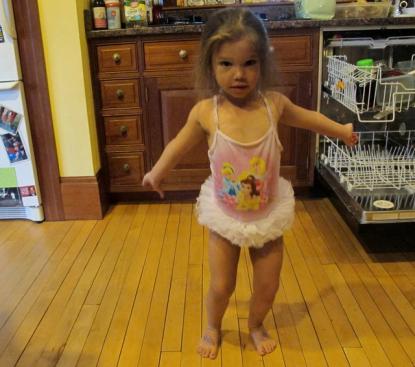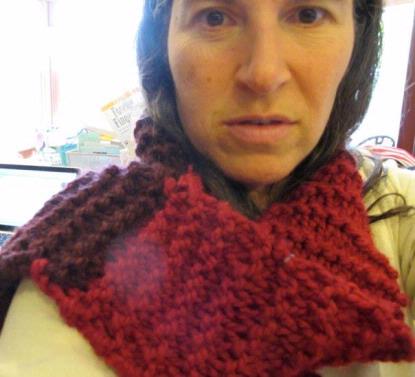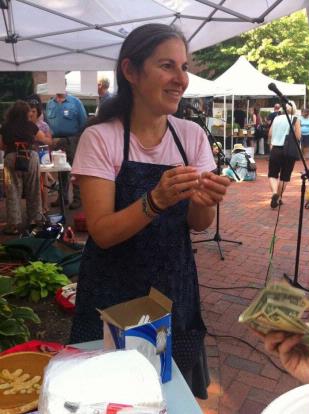Sure, there’s a little jest implied to my little series’ titles: What Do Feminist Toddlers Wear and What Do Feminist Preschoolers Wear? Obviously, I can’t determine how my children eventually define feminism, or whether they decide they are—eventually—feminists.
What I can do is make decisions like whether I allow or disallow a boy of mine wear a dress or a construction hat or whether a girl keeps a commercialized character’s bathing suit of the princess-y persuasion. But when I think about what I hope my kids learn about feminism, clothes are not at the heart of anything; the message I’d like my kids take in is about equality and the ability to determine one’s path—and the notion that women are just as capable and free in this regard as men—or at least, should be. Sure, the adults have got the whole 77 cents on the dollar problem and reproductive justice for all and a few other niggling issues to clear up first.

(I let her wear it for two days around the house before I got rid of it).
There’s also this interesting, seemingly “soft” and highly politically charged thing: appearance and fashion, beauty and style. Women’s appearance—beauty pageants, the dollars made by models, the industry that is all about diet and the incredible amount spent on things like plastic surgery and a bunch more “beauty” is, from resources allocated standpoint—big business, and much more of a social imperative for women than for men. Often, the kinds of appearance-related attentions are not a boon to females’ health (physical, emotional, or fiscal). Anyone with a little girl can tell you that girls’ clothing encourages comment—so often girls’ clothing is frilly, cutesy, sparkly stuff. To see how that pink beginning unfolds, as girls become women—to a given that looks are of paramount importance isn’t at all surprising. Females are groomed to this; to fight it becomes a bigger endeavor than simply wearing sweatpants. Even tomboys can claim style. Yet, to make a stark pronouncement about appearance and all its components being completely unimportant does not inherently embrace a “more feminist” stance.
Feeling comfortable in one’s own self—healthy body, healthy self-esteem—that’s a human pleasure. That’s something to strive towards. Parents attempt to instill self-esteem into our children, so that they can walk into adulthood easy in their skins, bodies and even clothing.
And this throws me, a casual—bordering on worse than casual—writer, mama and woman in her late forties, into a mini-quandary. Is how I put or don’t put effort into appearance just another thing I must do “right” for my children’s sakes? Must I model a better, maybe even blog-worthy style?
Yikes!

Before you think I’ve got any answers forthcoming here, I’ll stop you. I don’t. So far, I can say this: I’ve upped my style thusly, through some new t-shirts and making a more regular commitment to doing yoga, receiving bodywork and getting more sleep. I’m becoming devoted to this much of a beauty routine: to slathering my body in oil rather than lotion, and putting lotion on my face each night. I love my electric toothbrush and my dental floss. I eschewed dying my hair a long ways back now and embrace that (and cut my own hair, ‘cause everyone needs a little DIY badass to boot).
My friend Lauren is blogging about what she wears, though, and she makes a great point: she asserts that feeling good about oneself is a part of embracing one’s feminism. She’s got me thinking. She’s got me reading. She’s got me seeing my own love of other blogs anew, and considering that like with everything else there is a balance where style—on one’s person or in one’s home or even more specifically clothing or kitchen or décor—is almost celebratory of a life being lived with pleasing gusto. Finding the playful, peaceful, happy in such things makes our lives more playful, peaceful and happy, too, even perhaps, more whole. Why leave all that to the anti-feminists, right?
I may even need another series: What Do Feminist Preschoolers’ Mothers Wear?



